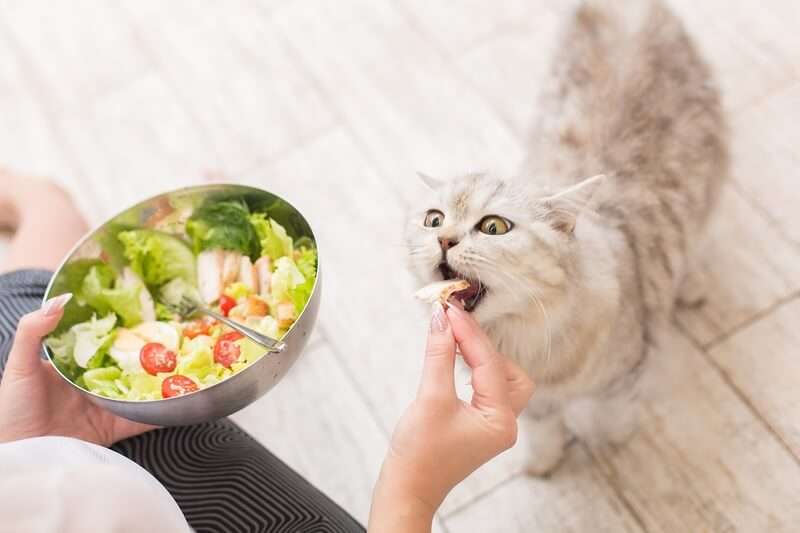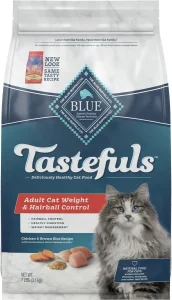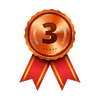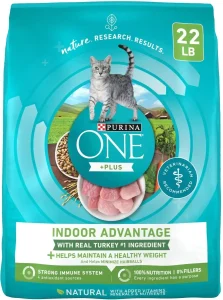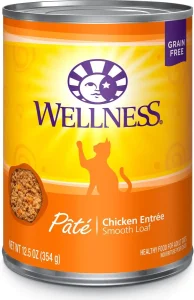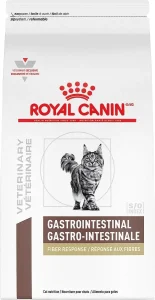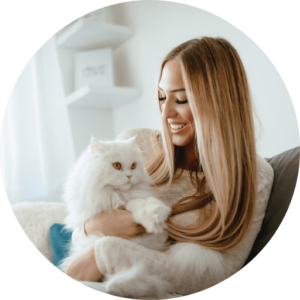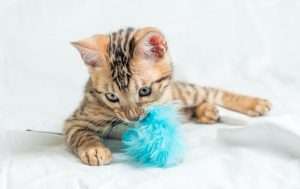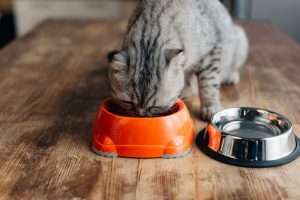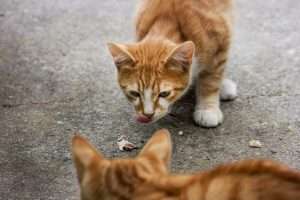Table of Contents
We will also discuss the benefits of high fiber cat food, and how it can improve your cat’s overall health and wellbeing. Whether you are looking to improve your cat’s digestive health, manage their weight, or prevent future health problems, this article will provide you with all the information you need to make an informed decision about the best high fiber cat food options for your cat.
Product Overview
Rank
Image
Product
Details
Price

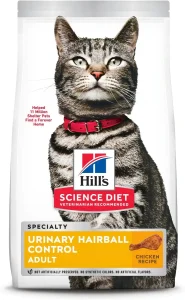
Hill's Science Diet
- High-quality natural ingredients
- No artificial preservatives or flavors
Understanding High Fiber Cat Food
Feeding your cat high fiber food is particularly important if your cat has digestive sensitivity issues, such as diarrhea, vomiting, or irritable bowel syndrome. High fiber food can help regulate their digestive system, reduce inflammation, and promote the growth of beneficial gut bacteria. Additionally, high fiber food can aid in weight management by promoting satiety and reducing the risk of obesity.
It’s important to check the ingredients in high fiber cat food to ensure that the food is free from fillers, artificial preservatives, and flavors. Natural, high-quality ingredients such as whole grains, fruits, and vegetables are ideal for promoting healthy digestion and overall health in cats. In summary, high fiber cat food is a crucial dietary requirement for feline health, particularly for cats with digestive issues or weight management problems.
Key Features to Look for in High Fiber Cat Food
- Types of Fiber and their Benefits
Not all fibers are created equal, and it’s important to understand the different types of fiber and their benefits. Insoluble fiber, such as cellulose and hemicellulose, helps promote healthy digestion and regularity. Soluble fiber, such as pectin and psyllium, can help regulate blood sugar levels, lower cholesterol, and support a healthy immune system. - Protein Source and Content
Cats are obligate carnivores, meaning that they require a diet high in animal protein to maintain optimal health. When selecting a high fiber cat food, it’s essential to look for a high-quality protein source that is easily digestible, such as chicken, turkey, or fish. Aim for a minimum of 30% protein content to ensure that your cat is getting enough of this essential nutrient. - Grain Alternatives and Fiber Content
Many commercial cat foods contain grains, such as wheat and corn, as a source of fiber. However, these grains are not always easily digestible and may cause digestive issues in some cats. Look for alternative sources of fiber, such as brown rice, peas, and sweet potatoes. Additionally, aim for a minimum of 3% fiber content to ensure that your cat is getting enough of this nutrient. - Essential Nutrients
In addition to fiber and protein, high fiber cat food should contain essential nutrients, such as vitamins and minerals, that are necessary for optimal health. Look for cat food that contains a balanced blend of these nutrients, including vitamin A, vitamin E, taurine, and omega-3 fatty acids. - Flavor Profiles
Cats can be finicky eaters, so it’s essential to choose a high fiber cat food that your cat will enjoy. Look for flavors and textures that your cat enjoys, such as wet or dry food, and experiment with different brands to find one that your cat likes. - The Importance of Limited Ingredients
Cats with sensitive stomachs may benefit from a high fiber cat food with limited ingredients. Look for brands that contain fewer ingredients, such as those made with a single protein source, to help reduce the risk of digestive upset and food allergies.
Top High Fiber Cat Food Brands in the Market
Hill's Science Diet Adult Urinary Hairball Control Dry Cat Food
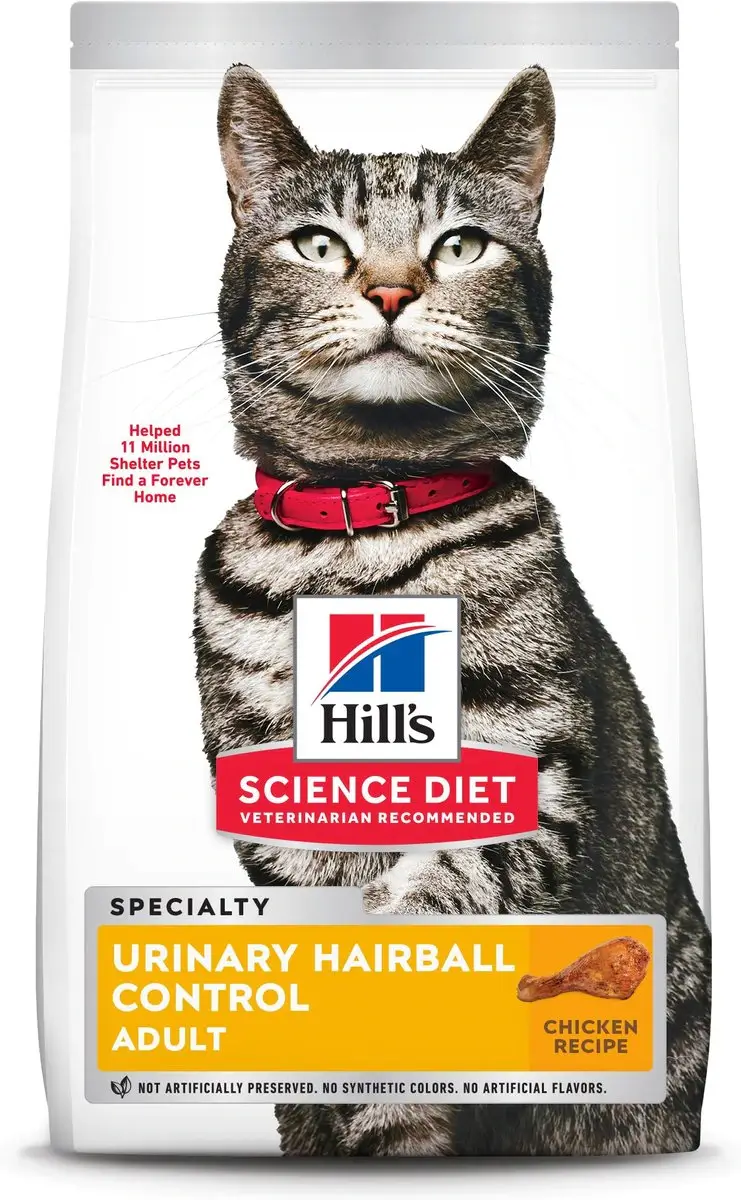
- Pros
- Contains natural ingredients
- No artificial preservatives or flavors
- Includes antioxidants for immune system support
- Cons
- Contains some grains
Blue Buffalo Indoor Hairball Control Chicken & Brown Rice Recipe Adult Dry Cat Food
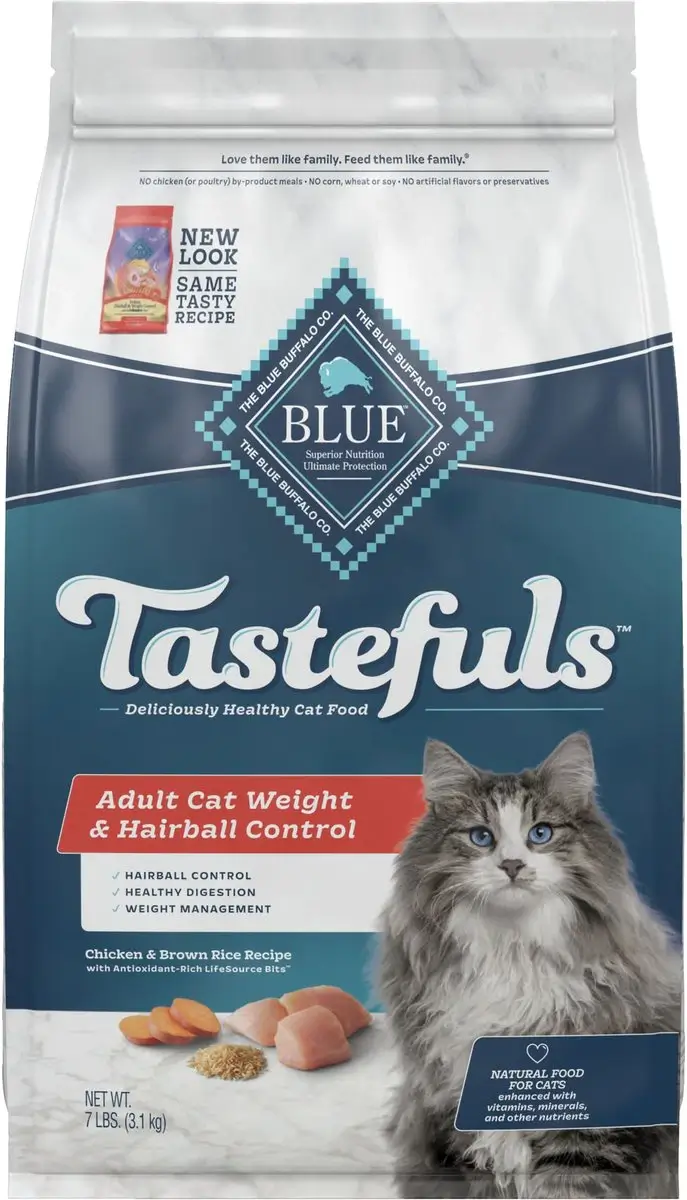
- Pros
- Grain-free
- Contains real chicken, fruits and vegetables for added nutrition
- No artificial preservatives or flavors
- Cons
- Can be expensive
- May cause loose stools in some cats
Purina ONE Indoor Advantage Adult Cat Food
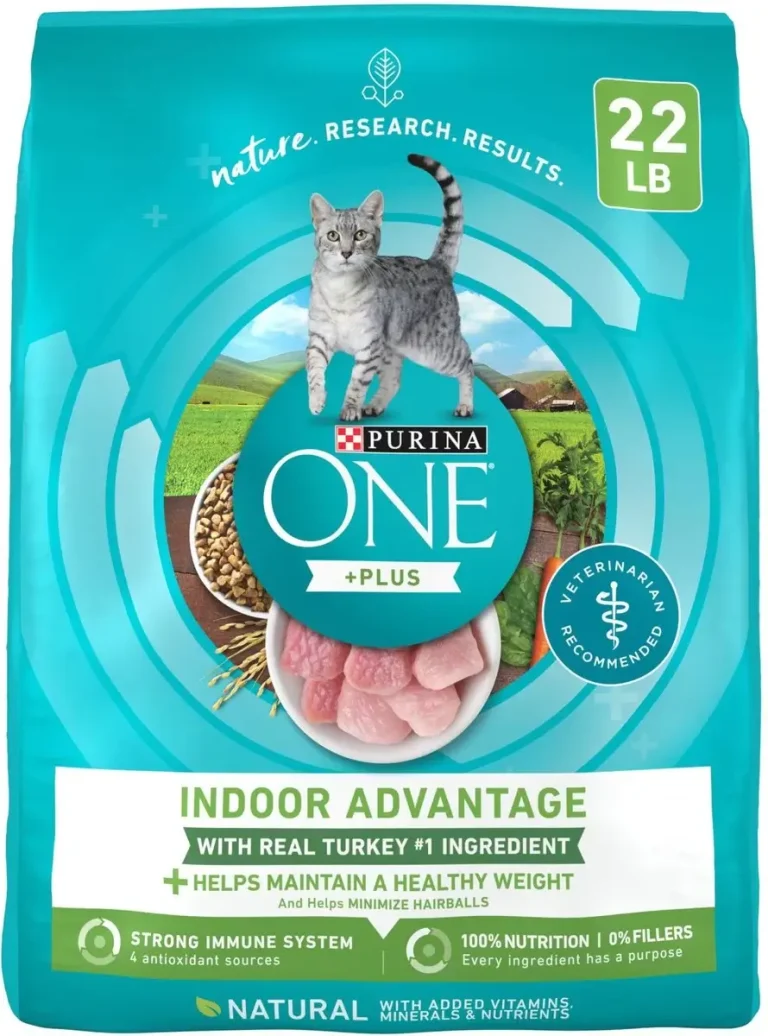
- Pros
- Contains real turkey
- Essential vitamins and minerals
- Affordable
- Cons
- Contains some grains
- May cause vomiting in some cats
Wellness Complete Health Pate Chicken Entree Grain-Free Canned Cat Food
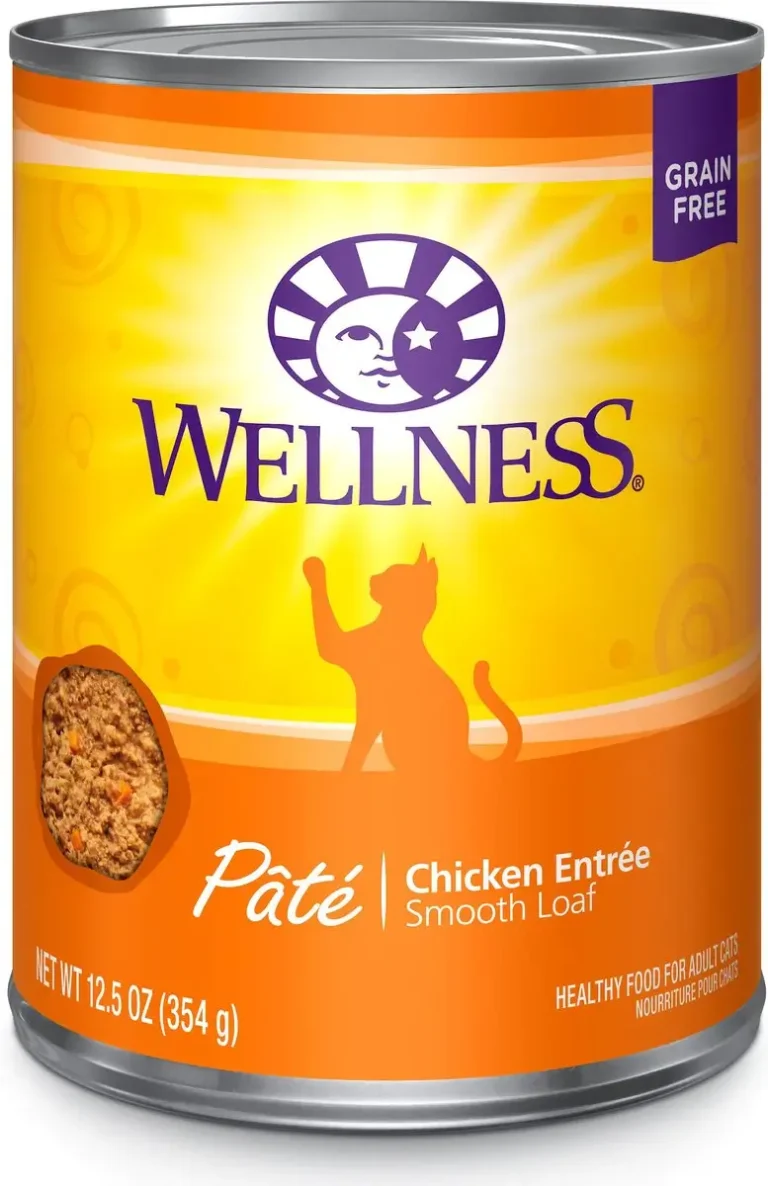
- Pros
- Contains real chicken
- No artificial preservatives or flavors
- Essential vitamins and minerals
- Cons
- May not be suitable for cats with poultry allergies
- Can be expensive
Royal Canin Fiber Response
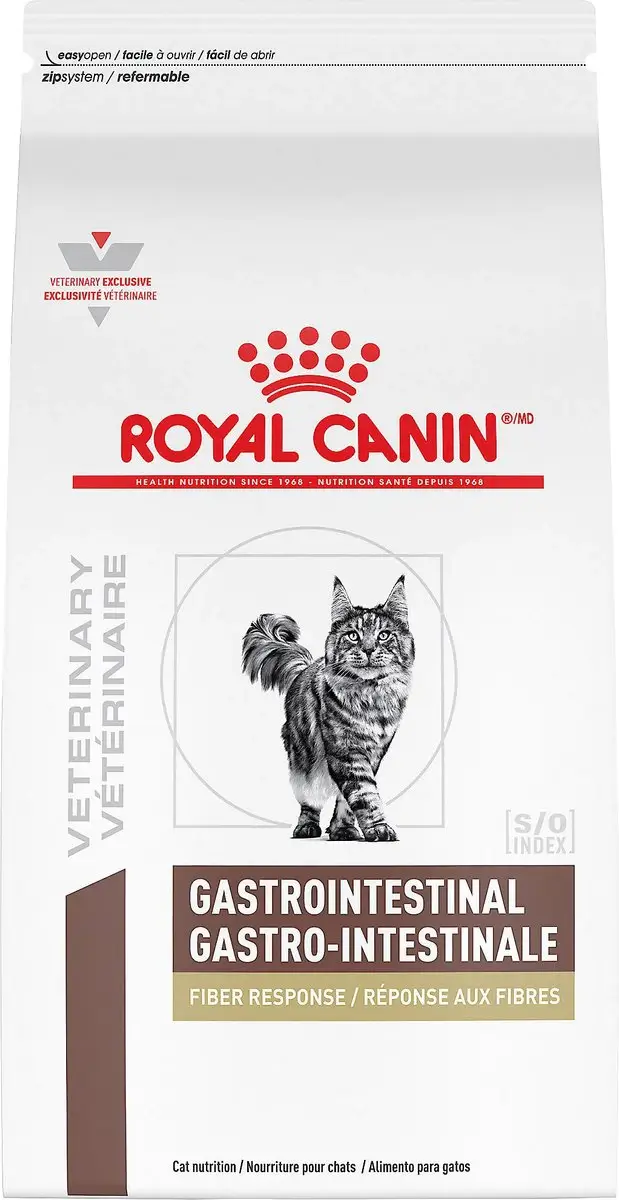
- Pros
- Formulated specifically for indoor cats
- Contains a blend of fibers for optimal digestion
- Essential vitamins and minerals
- Cons
- Can be expensive
- Contains some grains
Homemade High Fiber Cat Food Recipes
Making homemade high fiber cat food can be a great way to ensure your feline friend is getting the nutrients they need. Here are some reasons why you might consider making your own cat food:
- Control over ingredients: Making your own cat food allows you to have complete control over the ingredients that go into your cat’s food, ensuring that they are getting high-quality, nutritious ingredients.
- Cost savings: Making your own cat food can be more cost-effective than buying pre-made high fiber cat food.
- Customizable recipes: You can customize recipes to meet your cat’s specific dietary needs and preferences.
If you’re interested in making your own high fiber cat food, here are some essential ingredients you’ll need:
- High fiber vegetables: Examples include carrots, sweet potatoes, and pumpkin.
- Lean protein: Chicken, turkey, and fish are all good options.
- Supplements: It’s important to include supplements to ensure your cat is getting all of the essential vitamins and minerals they need. Talk to your veterinarian about which supplements to include.
To make homemade high fiber cat food, follow these steps:
- Cook the protein source: Cook the protein source thoroughly and remove any bones or skin.
- Cook the vegetables: Cook the vegetables until they are soft enough to be easily mashed or pureed.
- Mix the ingredients: Mix the cooked protein source, vegetables, and supplements together until well combined.
- Serve: Serve the homemade cat food immediately, or store it in the refrigerator for up to three days.
When feeding your cat homemade high fiber food, it’s important to follow these tips:
- Introduce the food gradually: Gradually transition your cat to the new food over a period of several days to prevent digestive upset.
- Monitor your cat’s weight: Homemade cat food can be higher in calories than store-bought food, so it’s important to monitor your cat’s weight to ensure they aren’t gaining too much.
- Talk to your veterinarian: Your veterinarian can help you develop a homemade cat food recipe that meets your cat’s specific dietary needs.
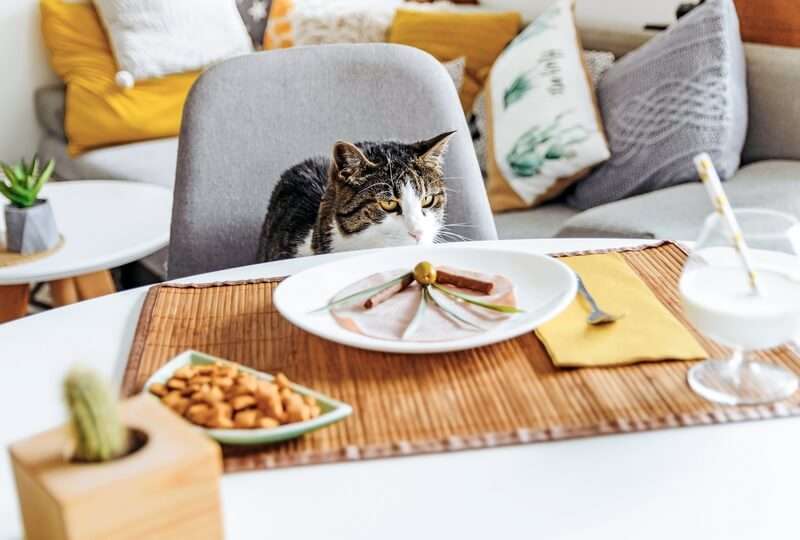
Frequently Asked Questions
Tips for Transitioning Your Cat to High Fiber Food
Transitioning your cat to a high fiber diet can take time and patience. Abrupt changes in your cat’s diet can lead to digestive upset, so it is important to transition gradually. Here are some tips for transitioning your cat to high fiber food:
- Start slowly: Begin by mixing small amounts of high fiber food with your cat’s current food, gradually increasing the proportion of high fiber food over several days or weeks.
- Time frame: The length of time for the transition will depend on your cat’s individual needs and how they are responding to the new food. Generally, it is recommended to take 7-10 days to fully transition your cat to a new diet.
- Introduce new food gradually: When introducing new high fiber food, it is important to do so slowly, particularly if your cat has a sensitive digestive system. A sudden change in diet can cause diarrhea, vomiting, or other digestive problems.
- Monitor your cat’s reaction: Keep a close eye on your cat’s reaction during the transition. If you notice any signs of digestive upset, such as vomiting or diarrhea, slow down the transition process and consult with your veterinarian.
- Provide plenty of fresh water: High fiber diets can cause dehydration in cats, so make sure your cat has access to plenty of fresh water at all times.
Remember that every cat is different, and the transition process may take longer for some cats than others. Be patient and take it slow to ensure your cat adjusts to their new high fiber diet without any issues.
The Verdict
When transitioning your cat to high fiber food, take it slow and introduce new food gradually over a period of 7-10 days. Monitor your cat’s reaction during the transition and seek advice from a veterinarian if necessary.
In summary, prioritize your cat’s health by providing them with a balanced diet that includes high fiber food. Look for reputable brands with high-quality ingredients and consider homemade options. With the right diet, your cat can thrive and live a happy, healthy life.


